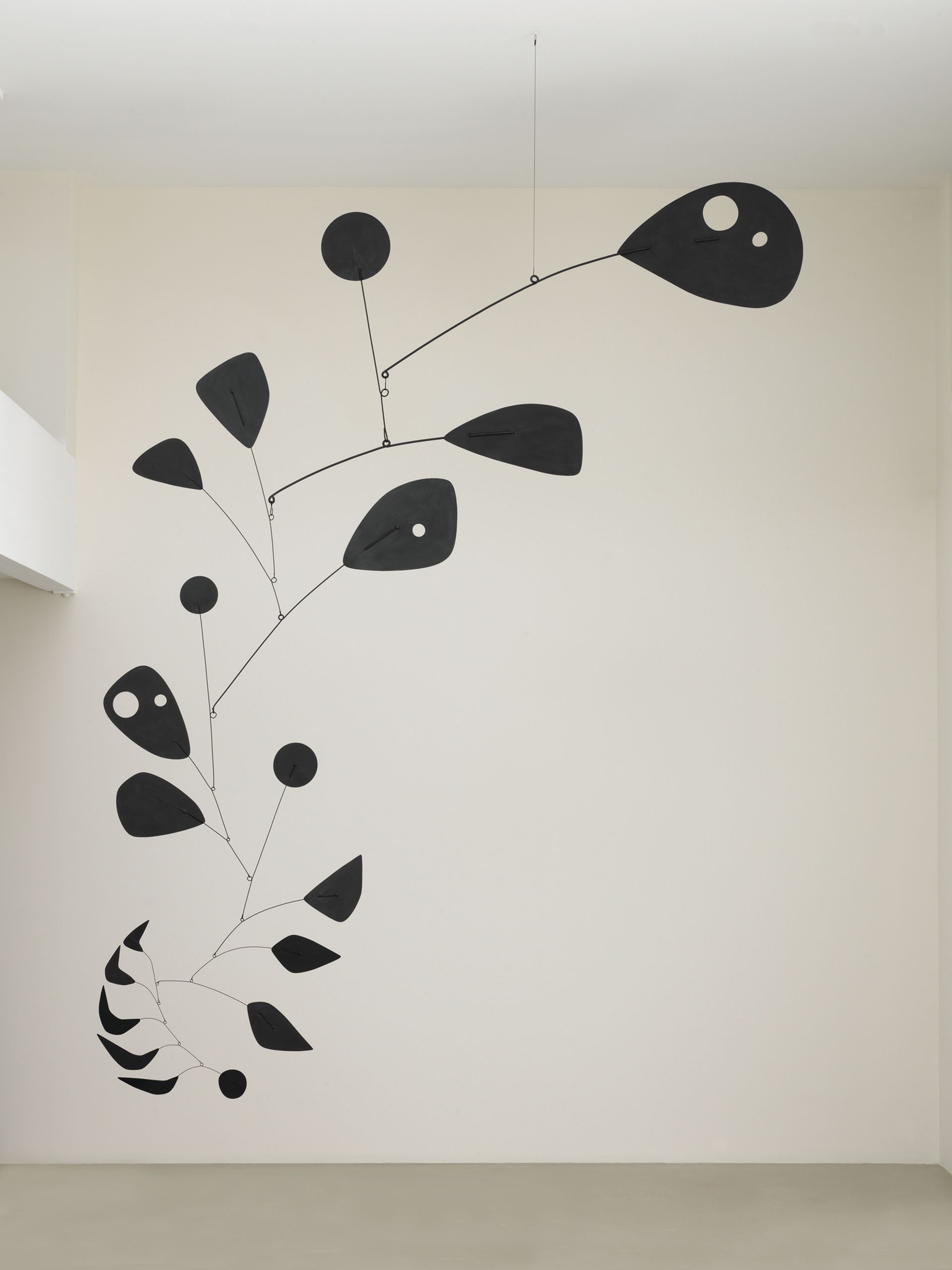One of Alexander Calder’s largest and most complex mobiles is to be shown outside Brazil for the first time this week after being restored by his grandson, Alexander Rower. Black Widow (around 1948) will be hung in its own space as the finale of the exhibition Alexander Calder: Performing Sculpture (11 November-3 April 2016) at Tate Modern in London—the largest show of Calder’s work ever held in the UK.
Rower, the head of the Calder Foundation in New York, is on a mission to restore as many sculptures as possible. He has his work cut out: Calder’s sculptures may seem improvisational but they are, in fact, carefully engineered. Some mobiles balance so delicately that even a new coat of paint can push them off-kilter. (Many of Calder’s paints contained lead, which made them heavier.) And beyond ordinary wear and tear, there is human intervention: some owners bent wires or even reconfigured mobiles to make them fit a particular space.
A family affair Rower and his brother, the artist Holton Rower, restore around 30 sculptures by Calder each year. If the work is a major example in a public collection and requires complex treatment, they do it for free. In recent months, the brothers have treated a work from the collection of the Museum of Modern Art in New York and four works bound for Tate Modern.

The Black Widow has been their most daunting restoration. “No other work is quite comparable,” says Achim Borchardt-Hume, the director of exhibitions at Tate Modern. Calder gave it to the Instituto dos Arquitetos do Brasil (IAB) in São Paulo during a trip in 1948. Since then, it has left the building only once, for a show organised by the Pinacoteca do Estado in São Paulo in 2006. In exchange for the IAB’s willingness to lend the work to the Tate, the Calder Foundation did the restoration—worth around $30,000—for free.
Black Widow, a 12ft-high cascade of petals that get smaller as they approach the ground, is meant to “draw a line through space”, Alexander Rower says. Many of the wires, including the one attached to the largest, slowest-moving petal at the top, had been bent. One branch was hung on the wrong side; several were backwards. “These are pieces of Calder in a crunched-up state—it doesn’t express that vibrant energy,” Rower says. He wonders if the damage arose because “someone made aesthetic choices”. José Armenio de Brito Cruz, the IAB’s director, puts it down to “the passage of time”.
Over eight weeks, the sculpture was repainted, its branches reconfigured and nearly every wire reshaped. Rower referred to photographs from the sculpture’s debut at the Museu de Arte de São Paulo in 1948. He and his brother do not have formal conservation training, but they grew up watching their grandfather in the studio and have been restoring his works since they were teenagers. “I’m so confident that if my grandfather were here, he couldn’t say, ‘I didn’t paint that’,” Rower says.
He adds that he will have fewer works to repair in the future. “Now that [the sculptures] are so wildly valuable, people are being more careful. They handle them with gloves now, and build elaborate boxes to ship them.” Poisson volant (1957), a mobile half the size of Black Widow, sold at Christie’s last year for a record $25.9m.
The restored work does not seem dramatically different, but the impact of the treatment becomes clear when it is animated by the lightest of air currents. Rather than crashing into one another, the forms swirl seamlessly. The work “can perform again, and that feels delightful”, Borchardt-Hume says.

